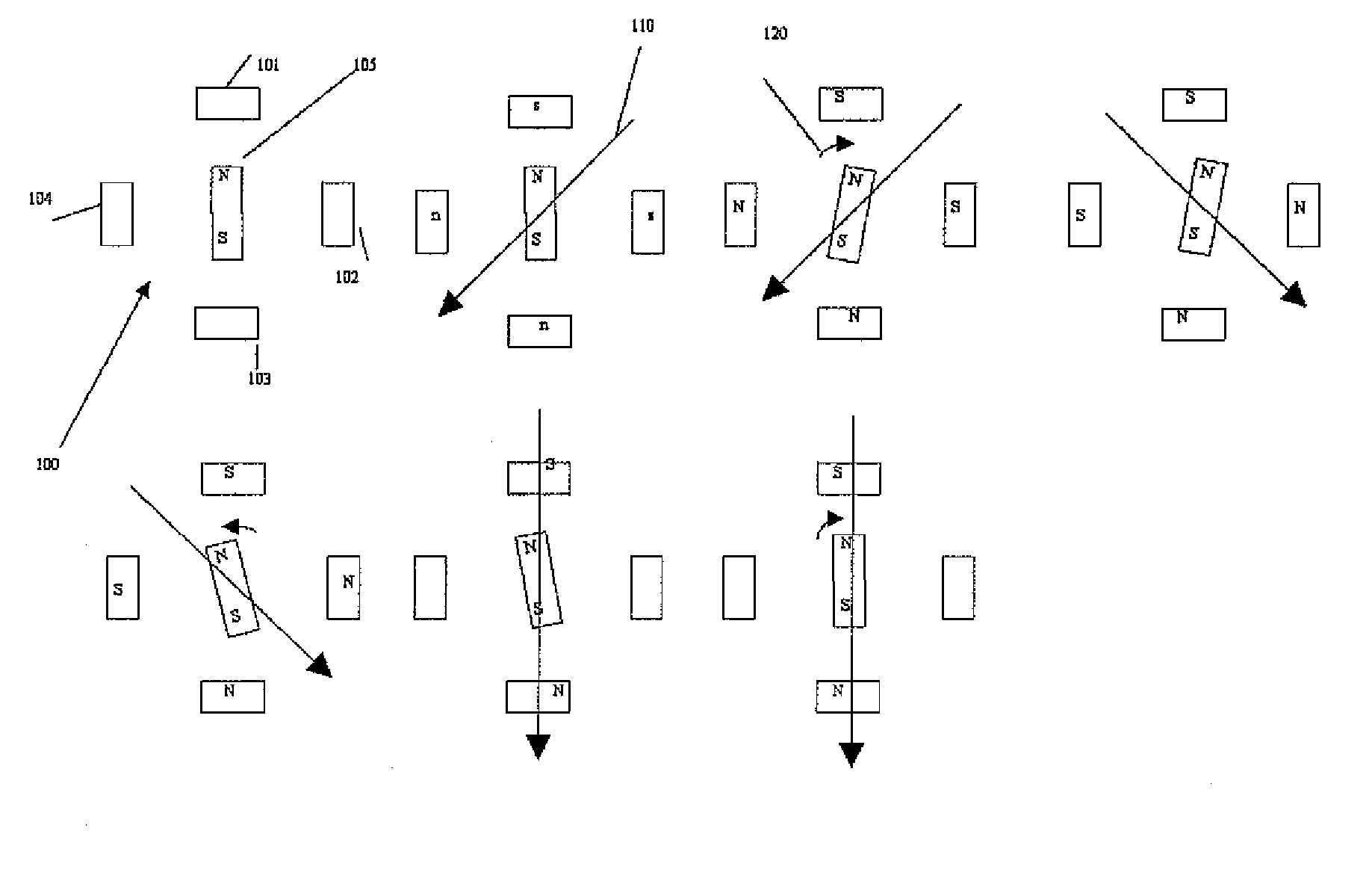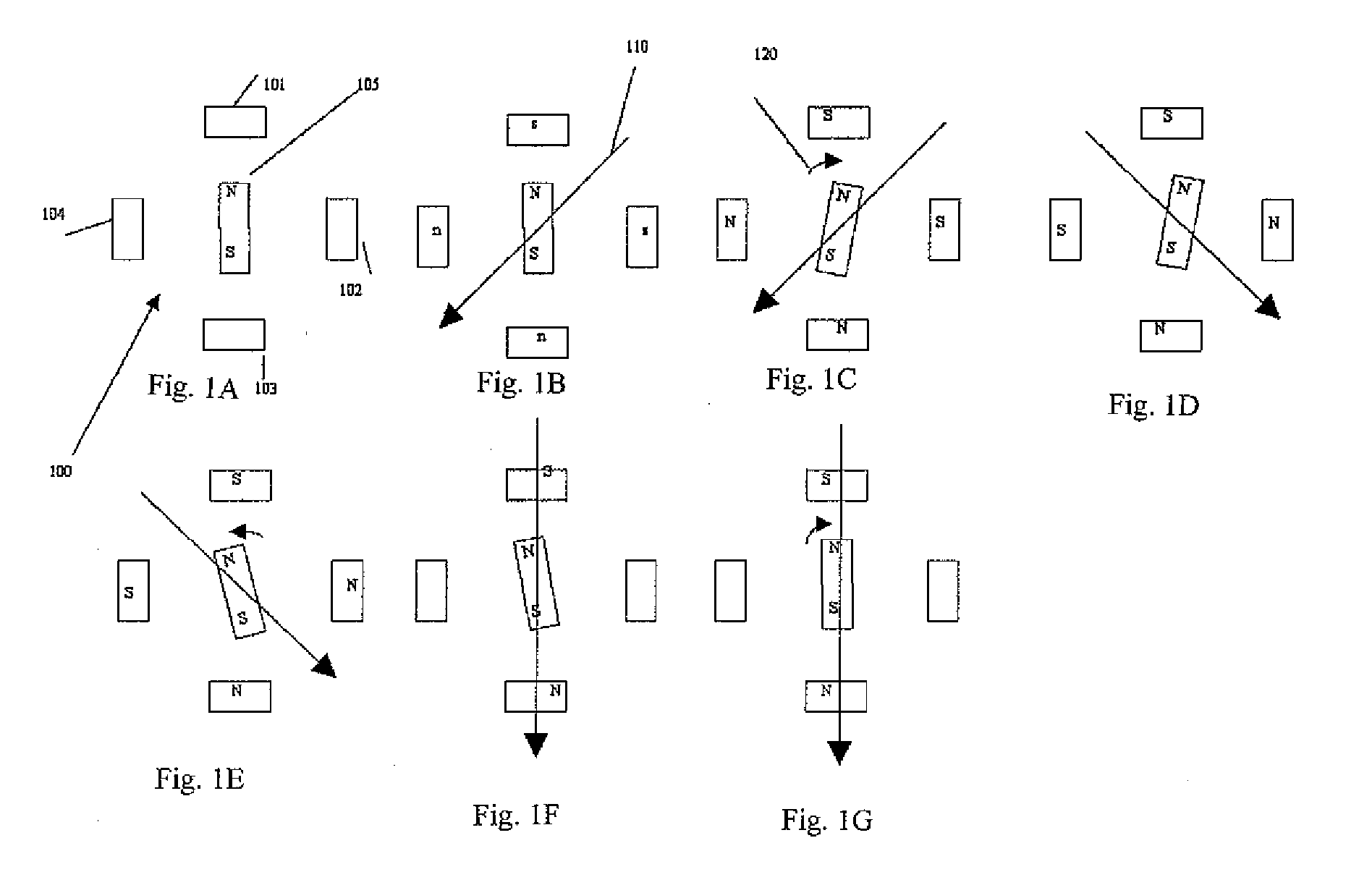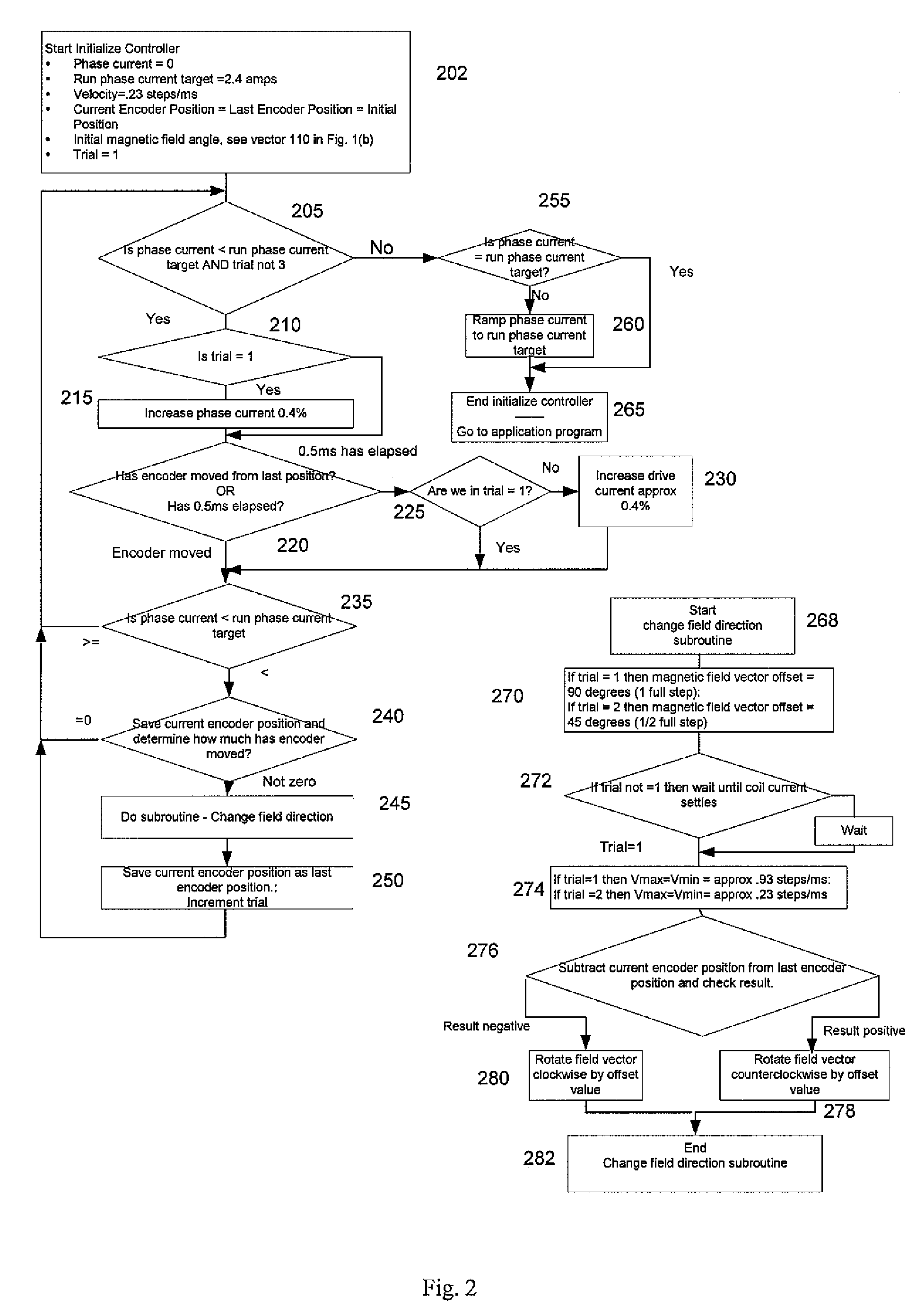Apparatus and Method for Minimizing Undesirable Stepper Motor Rotor Motions
a technology of undesirable rotor motion and apparatus, applied in the direction of electric programme control, dynamo-electric converter control, instruments, etc., can solve the problems of increasing the tendency to oscillation, the probability of rotor snapping rather than moving, and the probability of rotor snapping, so as to reduce undesired motion and reduce undesired motion.
- Summary
- Abstract
- Description
- Claims
- Application Information
AI Technical Summary
Benefits of technology
Problems solved by technology
Method used
Image
Examples
Embodiment Construction
[0018]Generally speaking, in connection with a first preferred embodiment, the present invention is directed to a method and apparatus for reducing or eliminating turn on mechanical transients in a stepper motor resulting from an initial misalignment of an actual rotor position and a commanded rotor position which is based on phase currents of the motor.
[0019]The present invention avoids problems with the prior art by gradually increasing phase currents while sensing both rotor motion and the direction of rotor motion and using the information to “zero in” on the closest detent that matches a commanded rotor position based on electrical angle of the phase currents.
[0020]In the preferred embodiments, the invention preferably comprises a shaft encoder mounted to a stepper motor shaft to sense the amount and direction of motor rotor motion as phase currents are increased. Having sensed motion, the currents are modified to change the direction of a magnetic field vector generated by the...
PUM
 Login to View More
Login to View More Abstract
Description
Claims
Application Information
 Login to View More
Login to View More - R&D
- Intellectual Property
- Life Sciences
- Materials
- Tech Scout
- Unparalleled Data Quality
- Higher Quality Content
- 60% Fewer Hallucinations
Browse by: Latest US Patents, China's latest patents, Technical Efficacy Thesaurus, Application Domain, Technology Topic, Popular Technical Reports.
© 2025 PatSnap. All rights reserved.Legal|Privacy policy|Modern Slavery Act Transparency Statement|Sitemap|About US| Contact US: help@patsnap.com



